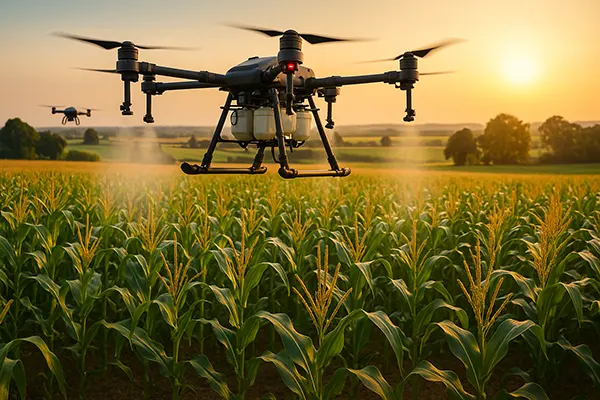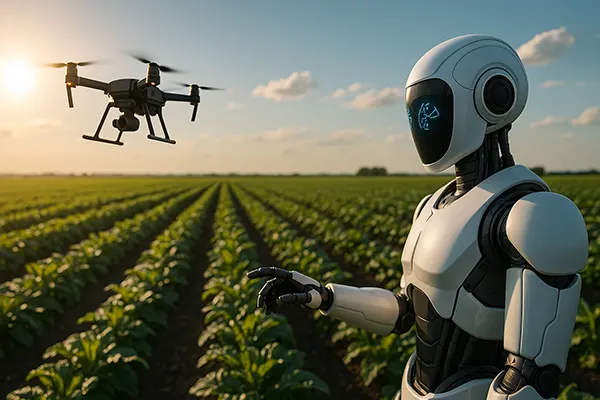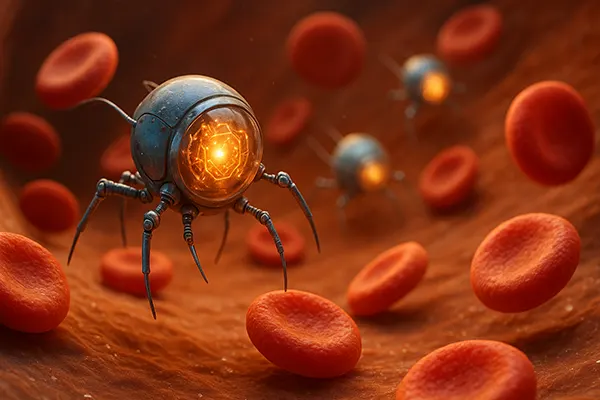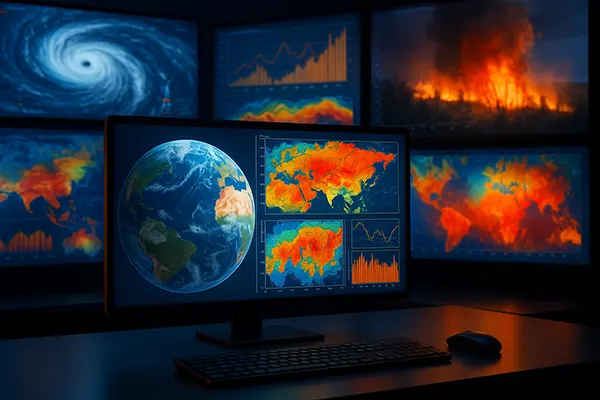Agrotechnologies 2025: How Drones and AI Transform Agriculture

The agricultural sector is witnessing a paradigm shift with the integration of cutting-edge technologies. As we move into 2025, the role of drones and artificial intelligence (AI) becomes increasingly significant, transforming traditional farming practices. This article explores how these innovations are revolutionising agriculture, enhancing productivity, sustainability, and resource management.
The Role of Drones in Modern Agriculture
Drones have become an integral part of modern agriculture, offering numerous applications that streamline farming processes. Their ability to cover vast areas efficiently makes them invaluable for monitoring crop health, soil conditions, and even livestock management.
One of the most significant advantages of drones is their capacity to perform aerial imaging. By capturing high-resolution images, farmers can monitor crop health in real-time, identify areas affected by pests or diseases, and take preventive measures. This data-driven approach ensures timely intervention, reducing crop loss.
In addition to monitoring, drones are increasingly used for precision agriculture. Equipped with sensors and advanced mapping capabilities, they assist in planting seeds, applying fertilisers, and spraying pesticides accurately. This precision minimises waste and promotes sustainable farming practices.
Precision Agriculture: Efficiency and Sustainability
Precision agriculture leverages drone technology to optimise resource use and boost crop yields. Drones equipped with multispectral sensors assess soil composition, moisture levels, and nutrient availability. This data allows for targeted interventions, saving costs and enhancing productivity.
Another crucial application is irrigation management. Drones can identify water stress in crops, allowing farmers to focus irrigation efforts where needed. This targeted approach reduces water consumption, addressing one of agriculture’s most pressing environmental concerns.
Furthermore, drones are invaluable in livestock management. They help monitor animal health, track movements, and even assist in herding. By reducing manual labour and increasing accuracy, drones support more efficient livestock farming practices.
Artificial Intelligence: The Brain Behind Smart Farming
AI is increasingly becoming the brain behind modern farming operations. From predictive analytics to automated decision-making, AI enhances the accuracy and efficiency of agricultural practices. By analysing vast amounts of data, it supports farmers in making informed choices about planting, irrigation, and harvesting.
A key application of AI is yield prediction. By processing data from weather patterns, soil conditions, and crop health, AI models forecast yield outcomes, helping farmers plan better and mitigate risks. This predictive power is crucial for ensuring food security in a rapidly changing climate.
Additionally, AI-driven robots are revolutionising tasks such as weeding and harvesting. These robots operate with minimal human intervention, ensuring consistent performance and reducing the risk of human error. The integration of AI in robotics represents a significant leap towards fully automated farming.
Data-Driven Decision Making in Agriculture
The synergy between AI and big data is transforming agricultural decision-making. By collecting and processing data from multiple sources, AI systems generate actionable insights. These insights include pest outbreaks, optimal planting times, and soil management strategies.
Farm management software powered by AI also provides real-time data analysis. Farmers can monitor field conditions from their devices, receiving alerts and recommendations. This connectivity allows for timely responses to emerging challenges, maintaining high productivity levels.
Furthermore, AI facilitates traceability in the agricultural supply chain. Tracking crops from farm to table helps maintain quality standards and ensures food safety. This traceability is increasingly important as consumers demand transparency in food production.

The Future of Agrotechnologies: Integrating Drones and AI
The future of agriculture lies in the seamless integration of drones and AI. By combining aerial data collection with advanced analytics, farmers can achieve unprecedented levels of precision and efficiency. This synergy not only optimises crop production but also promotes sustainable practices.
One promising development is autonomous drone fleets managed by AI algorithms. These fleets can monitor large agricultural areas autonomously, making decisions based on real-time data. Such automation reduces labour costs and enhances monitoring accuracy.
Moreover, predictive maintenance for farming equipment is becoming a reality. AI algorithms detect wear and tear before breakdowns occur, reducing downtime and maintenance expenses. This proactive approach ensures uninterrupted farming operations.
Challenges and Ethical Considerations
Despite the potential, integrating drones and AI in agriculture presents challenges. Privacy concerns related to data collection and ethical implications of AI-driven decisions must be addressed. Balancing innovation with responsible practices is crucial for widespread adoption.
Additionally, the cost of implementing these technologies can be prohibitive for small-scale farmers. Bridging the gap between technological advancements and practical application in diverse farming contexts requires policy support and affordable solutions.
Ultimately, fostering innovation while ensuring equity and sustainability will define the success of agrotechnologies in 2025 and beyond.


